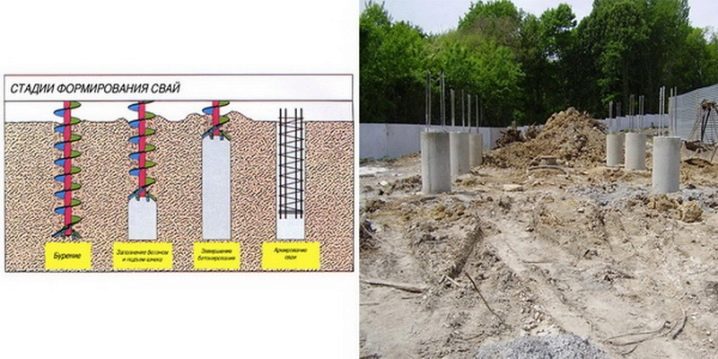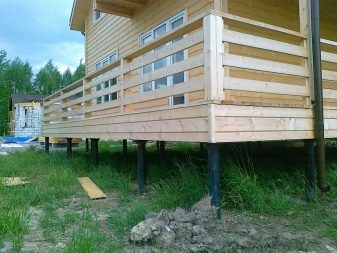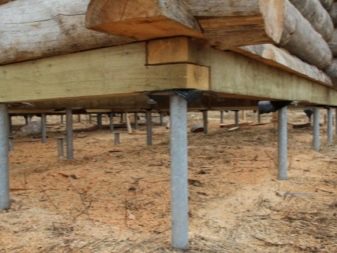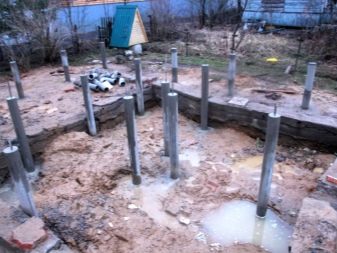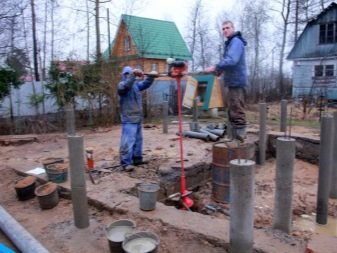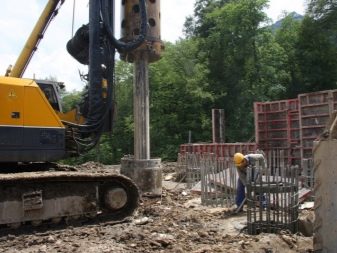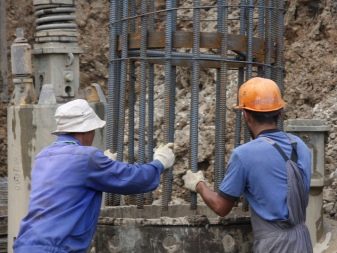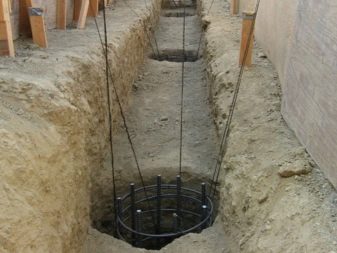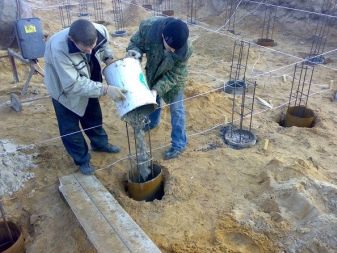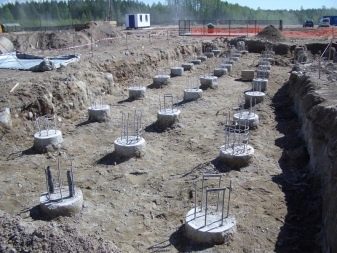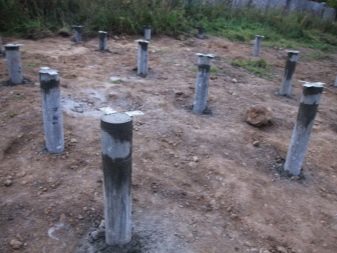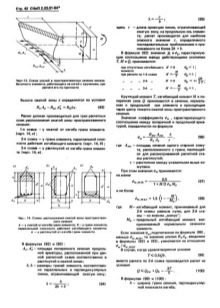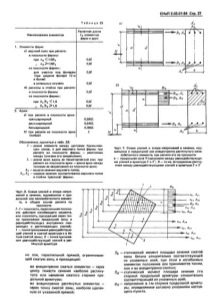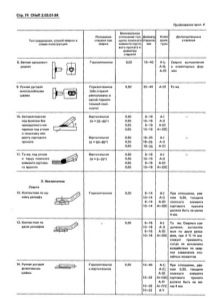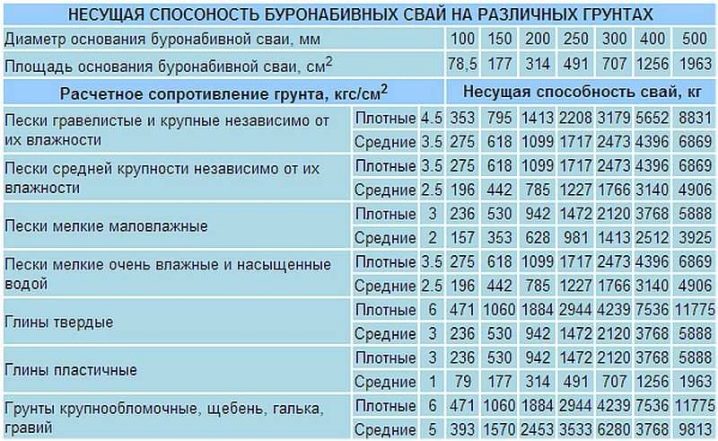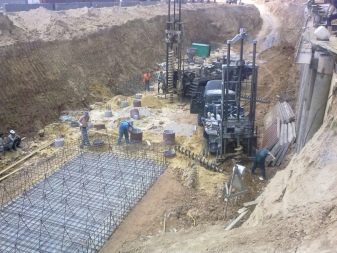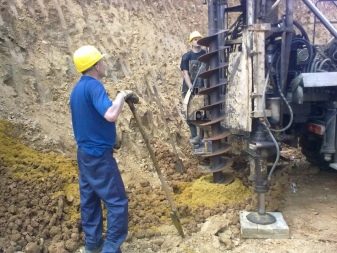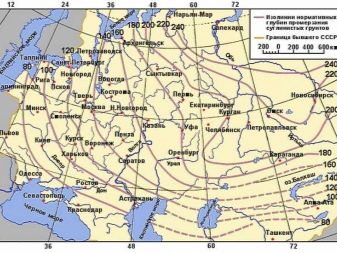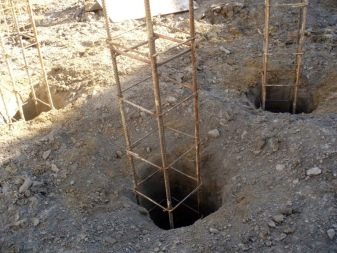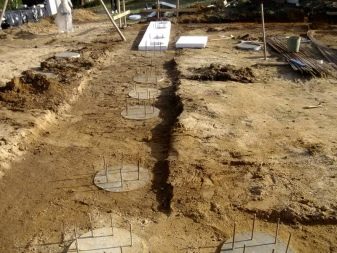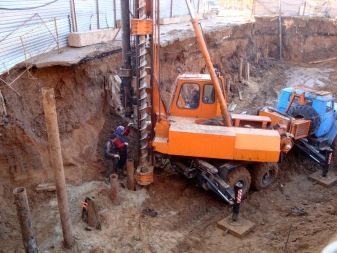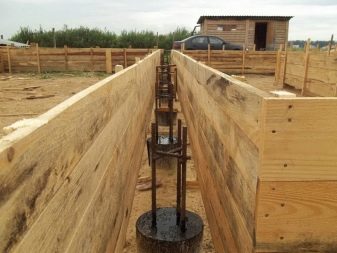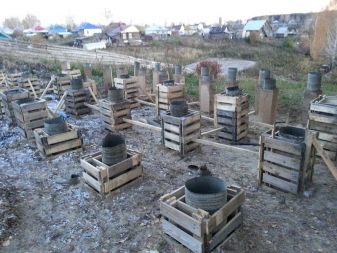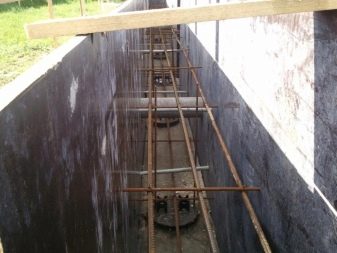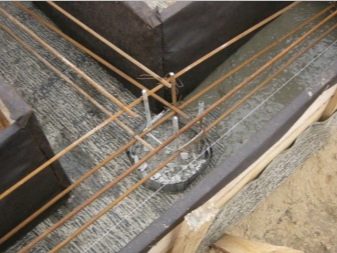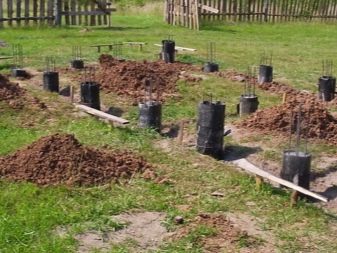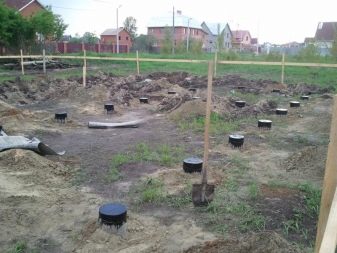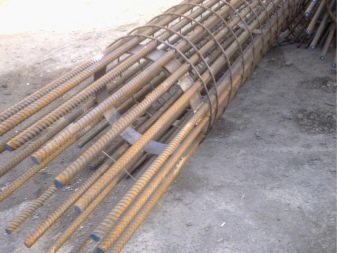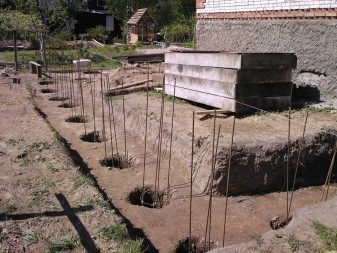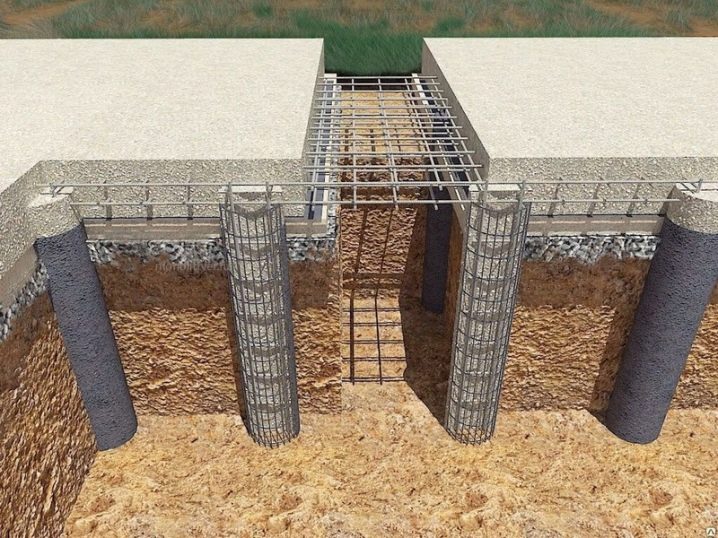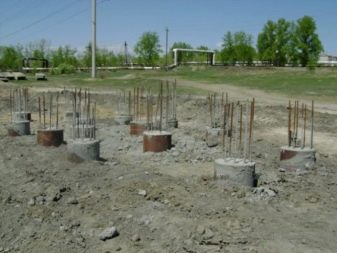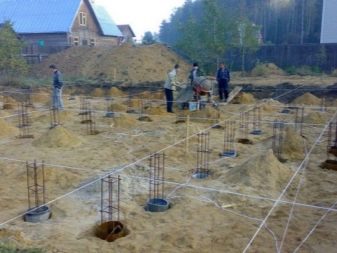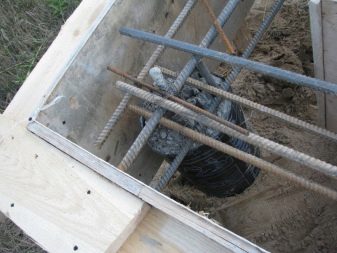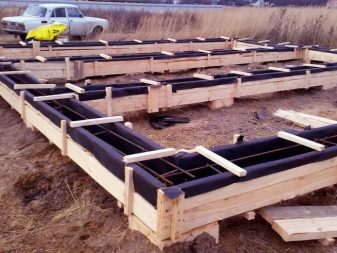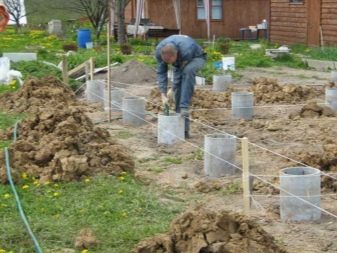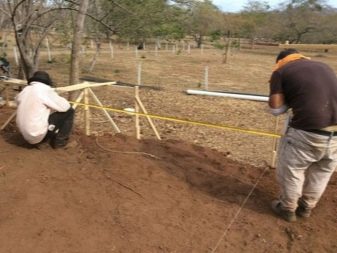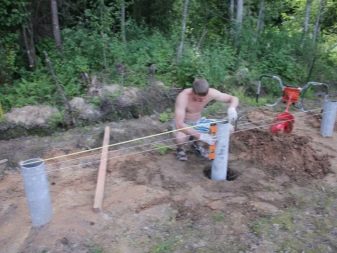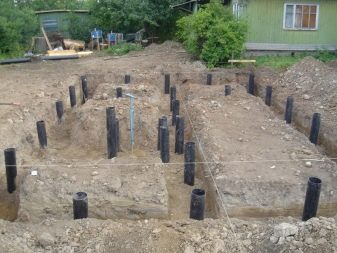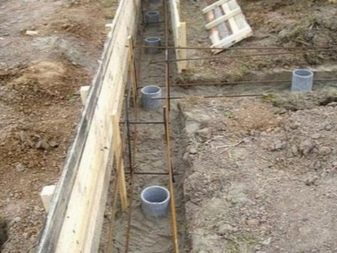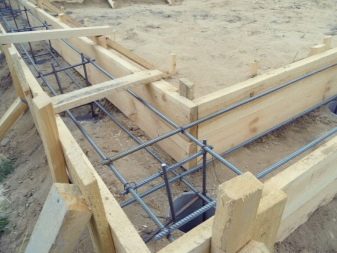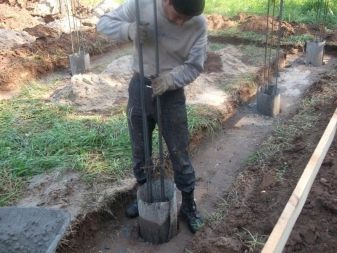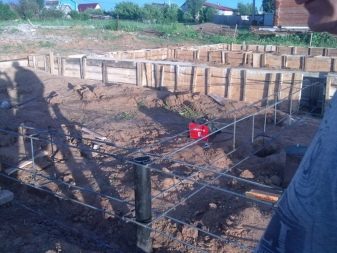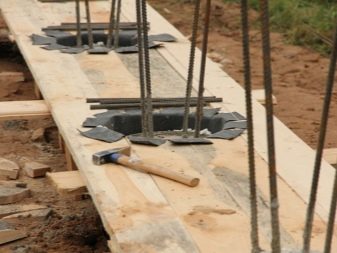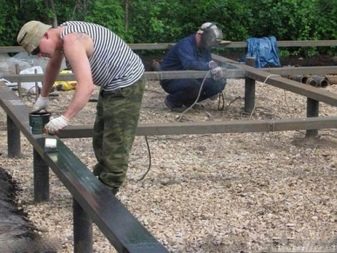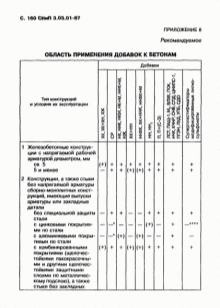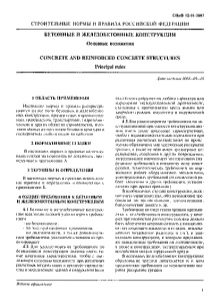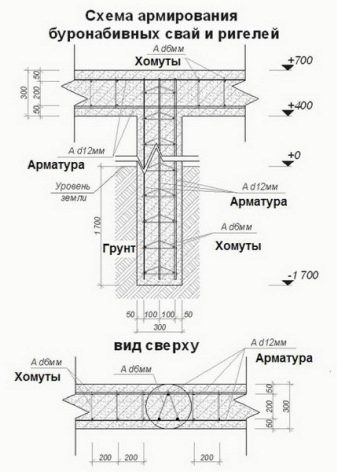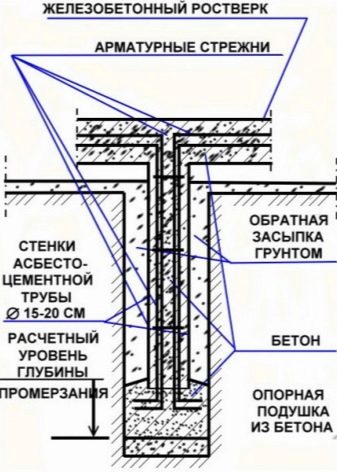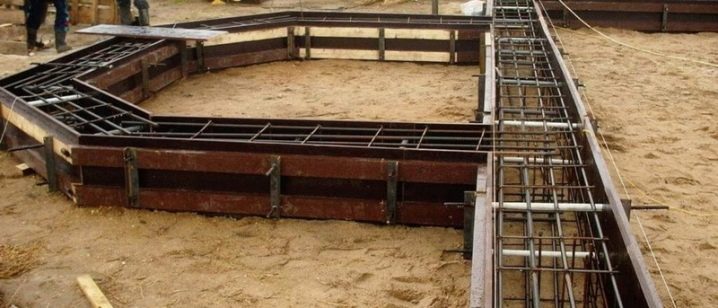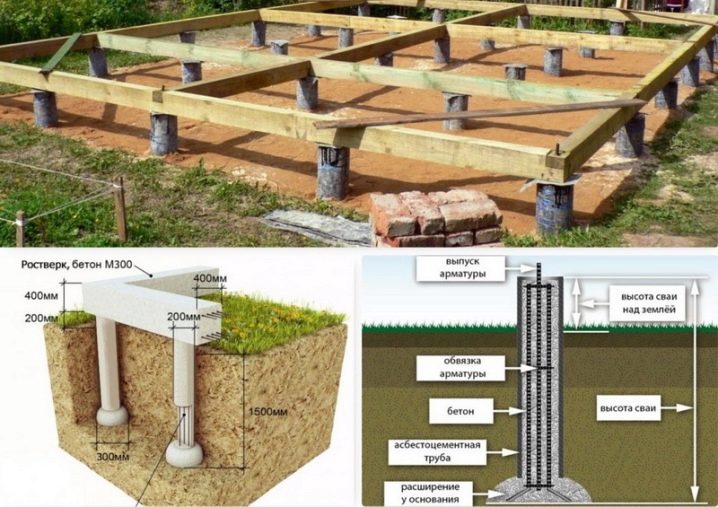Bored piles: device and subtleties of construction
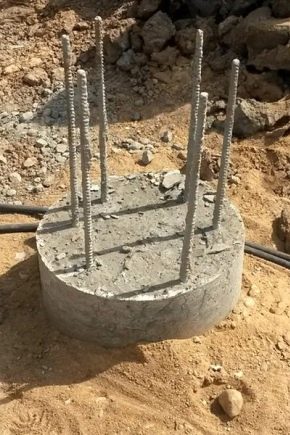
Any modern type of building needs a reliable foundation or foundation, which ensures the safety, stability and reliability of the entire structure. Most often, developers use the tape type of the foundation - it is easy to install, does not require large physical or financial costs, but it can be used not on all plots of soil. Hard ground rocks are sometimes found at great depths, which several times increases the volume of earthworks and increases all types of costs. Here it is advisable to use the foundation on bored piles, the device and the details of the construction work on the installation of which we consider in this article
Special features
The pile type of foundation installation is known even to newcomers in the construction industry.It is quite popularized, and it can be found in the construction of absolutely any buildings - whether it be entire shopping centers or private houses. This is explained, of course, by the reliability of the installation (since the piles evenly distribute the load from the building on the solid rocks of the soil) and lower financial costs, since the monolithic foundation foundation, and especially the foundation of good quality, costs much more money.
The installation of any kind of foundation implies the presence of both positive and negative aspects, this is explained by environmental conditions, soil characteristics, and individual features of the foundation. Very often, in order to avoid one "disease" in the building, you have to sacrifice something else. So, consider the main pros and cons of bored piles.
Let's start with the positive points:
- As already mentioned, the work on the installation of any pile structures is much cheaper than monolithic or strip counterparts, while they have the same high bearing capacity due to uniform load distribution;
- The design of bored piles allows you to set the foundation of a building on virtually any parts of the ground, meaning sandy-sandy rocks and rocks with a high level of groundwater;
- The service life or service life of bored piles with proper planning and installation can reach 50 years or more;
- In contrast to the installation of a strip foundation with driving piles, which need more or less soft surface soil for reliable driving, bored piles are placed in the soil after the hole has been drilled and cannot be damaged as a result of mechanical or automatic driving;
- The installation of bored piles, in fact, does not exert any pressure on the ground rocks, as in the case of driven piles, so they can be used in areas even with high land congestion, when there are already many buildings near the future construction, which is typical of large cities;
- The placement of many types of foundations implies the presence of special equipment, which, as a rule, is quite large and can damage the landscape integrity of your territory, unlike bored piles, the installation of which can be done by your own hands and rarely requires any equipment;
- Some types of reinforced concrete are very unstable to processes such as corrosion, it destroys their internal structure,which leads to a decrease in the reliability and stability of the whole structure, at the same time, high-quality bored piles are deprived of this drawback and can work properly without inspection work for a large amount of time;
- As for large cities with a well-developed sewer system or a large number of underground engineering structures, bored piles do not pose a potential hazard to these communications, as they can be placed in absolutely any place and, if desired, be moved;
- A minor but important plus - unlike other types, the foundation on bored piles is established quickly and practically silently.
Despite this number of positive aspects, there are drawbacks to this type of pile structures.
- At the first stages of installation of this type of piles, the technician is faced with the problem of high costs of concrete for a separate pile. In addition, depending on the type of soil and its features, it is difficult to calculate the exact amount of concrete needed in this area - this is because the soil around the installed pile is usually not tamped.
- The second significant drawback is the large amount of manual excavation work.Handwork is cheaper and less resource-intensive only in those cases when you yourself are an experienced developer and understand all the subtleties of competent organization of work. In another case, without the help of paid workers, self-installation of bored piles can lead to disastrous results, which is already more expensive for yourself.
- The following disadvantage is common for each type of foundation and pile structures - exceptional accuracy in calculations. Remember that factors such as the level of soil freezing, heaving of soil, groundwater level, the influence of external climatic factors may not disturb you during the installation of piles, but will definitely remind you of yourself in the future, since most of these factors may change.
- An important drawback is the complexity or, rather, the impossibility of placing a basement or basement room under the building. With proper planning, you can place a small cellar for vegetables and products under the building foundation, but even in this case, you should be careful - the uneven distribution of the piles under the building leads to an increase in loads on their individual sections.And this is a breakdown, cracks and chips.
After examining all the pros and cons described above, it is worthwhile formulating a clear definition of bored piles. Bored-type piles (some call this type “burzoal”) are such piles, for installation of which holes of the desired depth and diameter are pre-dug or drilled in the soil. Then a reinforcing cage is placed there, which is subsequently poured with cement (some developers first fill the pile with cement and then reinforce it under a certain pressure). After passing these stages of work and hardening of the concrete, the piles are interconnected by a reinforced concrete foundation, and as a result, the same strip foundation is obtained, but already on bored piles.
Regulatory requirements
At the moment, there is no separate standard for GOST installation of bored piles, however, there is a separate list of rules and regulations that a technician must adhere to when installing any kind of pile foundation. These are SNiP 02.03, 02.01 and 03.01. Each of these rules was put into production at the end of the 20th century, however, their general provisions, due to minor changes in the pile installation processes, have not changed to the present.
If you adhere to the requirements of SNiPs, before the installation of bored piles, it is necessary to make calculations of a geological, hydrometeorological and geodesic nature. After the exact calculations, you should choose: the appropriate type of bored piles for your territory, the size of the piles themselves or the supports. You can calculate some of the geological and hydrometeorological data on your own, with the help of an expert technician, or you can ask for actual information from the nearest weather centers.
The norms of the joint venture assume the influence of climatic factors on the installation process itself. Here the technique is recommended:
- to place bored piles in wet soils under thermal conditions of the environment not lower than -10 Hz;
- conduct a full range of measures to prevent freezing of the concrete composition before the process of pouring into the well;
- ensure proper operation of equipment in certain environmental conditions.
To a greater extent, these requirements relate, of course, to environmental conditions at low temperature values, since most of the problems arise due to the processes of heaving of the soil (to minimize these processes, you should use data on soil freezing in your territory).At high temperatures, as a rule, there are no problems with the performance of the equipment and the pouring of the solution.
In addition to the recommendations described, a certain set of measures should be taken to prepare the area for the installation of bored piles.
This complex involves:
- installation of barriers and warning signs on the boundaries of the work;
- liberation of the territory from all elements restricting movement or construction - they will slow down both the construction process and exert unnecessary influence and pressure on the ground (if the objects are dimensional);
- removal of grass cover and all kinds of shrubs from the construction site - individual plant elements can interfere with the work;
- providing the site with drainage structures is both useful for the future operation of an already built house, and it will be useful in the process of building itself due to not always favorable weather conditions or too high groundwater levels;
- organize the territory of construction in such a way that all the equipment necessary for drilling and pouring can freely fall on the object and move along it.
Specifications
The manufacture of high-quality foundations on bored piles has some characteristic features. This concerns, as a rule, the characteristics of the used elements of fastening, fixing and sealing both the well and the pile structures. Consider the characteristics of the elements of the foundation bored type. The first important element is the formwork, their device and characteristics. They have already been mentioned a little higher in the material as a fixing element of reinforcement parts.
Perhaps many of you are accustomed to understanding the formwork as a wooden or iron element to shape the concrete or reinforced concrete structures.
In part, this technology also applies to the construction of piles, but in this case, the following forms can be used as formwork:
- cylindrical rolled roofing felt (it is advisable if the hole diameter does not exceed 50-60 centimeters) - this element will provide additional waterproofing of the reinforcement parts during the pouring process;
- asbestos-cement pipe - it is stronger than other analogs, strengthens the entire structure and protects against unintended mechanical damage;
- PVC, PP pipes or pipes made of other polymers (this type is applicable for small, oversized and light buildings, an example of this is a small house, a bathhouse, a building no more than 2-3 floors).
The formwork can be both removable and non-removable, even after pouring concrete. Technicians most often use the first type, the second type provides additional fixation and waterproofing of reinforced concrete foundations, but the first one is more economical. Note that when using some types of polymer formwork, it is worth considering the vulnerability of some species to direct sunlight. At the mention of formwork it is worth mentioning the method of fixing the walls of the hole by using a casing - it performs to some extent a similar function, but is most often not removed from the pipe, although thrifty developers and developers with limited finances may act differently.
The second equally important element is the reinforced frame and its properties / characteristics.
Many inexperienced builders do not pay attention to such an important parameter as the quality and proper installation of reinforced elements in a bored base.A common mistake in defining the role of reinforcement parts for piles is simply their presence or absence. In other words, if they are, then it is already good. This is fundamentally the wrong approach, and it may be applicable for small private buildings, but if you ignore this factor when building large buildings, you risk the reliability of the entire building.
Based on the norms of SNiPa, the reinforcement cage is a structure of 4 or more vertical rods with a diameter of at least 10 mm. The structure of the reinforcement cage itself, in essence, is a cylinder - the bonding of rods with special horizontal clamps (metal, as a rule). It is worth noting that when the reinforcement cage is immersed in a prepared well, the tops of the rods should be released from the highest design point of the well (or from the point of the casing pipe, formwork) for 20-40 centimeters - this is necessary for the subsequent fixing of the reinforced concrete foundation.
It should be noted that the placement of a reinforced skeleton during a butt-concrete laying (using crushed stone or rubble stone, which are driven into the concrete by applying vibratory pressure) can be problematic.In this case, the reinforced elements are not placed along the entire height of the structure, but only in the upper part of the pile. This method is used in two cases: when the developer wants to strengthen the piles in a natural way; if desired, save on concrete mix.
This method is expedient or not - many experts consider it differently.
Another important point in the installation of a bored base is the correct placement of the grillage and the compliance of its functions with the required characteristics. Whether the competent installation of the grillage is important, or simply to place it on piles is rather a rhetorical question. Rostverk performs the main function in the work of the foundation - it distributes the pressure exerted by the building and the load on the piles or soil. The difference between the grillage of the bored base and the grillage of the usual tape type is that it relies not on the ground rocks in the prepared trenches, but on the ends of the reinforced rods growing over the pile.
Remember, in the winter time there is a high risk of soil deformation due to heaving processes. - This is a common problem for pile-type foundations, so in order to avoid damage to the foundation itself, it is worth leaving a gap of 15-20 centimeters between its base and the ground.If you have already installed the grillage and the height from the ground below the above - we advise you to place a 5-centimeter layer of foam under the grillage, it will prevent swelling and usually restores its shape in a warmer period.
Rostverk is installed after pouring the formwork with concrete solution and after it is completely dry. In the future, for waterproofing the foundation, it is recommended to lining the grillage with two layers of roofing material.
Installation
It is worth giving a step-by-step instruction, using which and after carrying out the precautions and measures described above, the technician will be able to build a high-quality bored foundation with his own hands.
So, the builder must adhere to the following actions:
- performance of measuring and marking works - for their competent performance by technicians, special drawings are prepared or ordered taking into account both the territorial and technical features of the building;
- Determination of the type of piles - hanging piles (which do not reach solid ground) and piles-stands (pile structures based on hard rocks), the first type is more applicable in disputable areas of soil - with a high groundwater level,with possible soil shifts and with high heaving of the soil in winter;
- installation of a drilling rig at the point of drilling;
- carrying out the drilling of a well with the necessary technique of depth and diameter values (these two parameters are selected in advance before construction, depending on the size of the building and the type of soil rocks);
- input of clay solution - it is necessary to prevent the processes of shedding the walls of the hole, and even then - the clay surface does not let moisture from groundwater and becomes a kind of natural internal reinforcement of the hole;
- Sludge elements (or the same drilling products - all kinds of rocks, impurities, bedding, obtained during drilling) must be extracted to the surface by drilling mud or mechanically (it all depends on the type of drilling);
- if the object is large and dimensional, and future pile elements require exceptional reinforcement, the developer uses specialized equipment to immerse the reinforcing elements to the full depth of an already dug well (depending on the depth this process can take place under pressure);
- after being placed into the hole, the reinforcing elements are fixed by stops, such supports can be formwork, the types of which we will consider below;
- after the above procedures, the hole is filled with concrete (depending on the depth of the pile structure, the concrete can be delivered by special equipment or manually, but concreting should not last longer than 3 hours in any case - this is the standard for SNiP);
- further actions involve drilling and filling wells at another point in the described scheme, the next measurement steps and the fastening of all the piles with a reinforced concrete foundation.
Payment
The process of installing any foundation is based on clear and dry figures. No matter how you would like to think otherwise, but the slightest mistake in the installation of the foundation - and you can provide yourself and your structure with constant repairs with earthworks and a lot of financial costs. To avoid this is easy - just take into account the widest possible range of factors that can affect the reliability of your foundation. This, of course, applies to the foundation on bored piles.
We give a complete list of parameters that, in one way or another, affect the safety of the installation of the bored base:
- the area and length of the foundation / grillage, as well as its height, side surface area and the bottom - so you can calculate the average pressure from the building to a separate part of the foundation and pile (do not forget to take into account the parameters of internal partitions);
- average costs of concrete or rubble elements - this will allow to calculate the possibilities of stiffness and strength of an individual pile - here you should take into account the presence or absence of siege pipes, formwork, waterproofing elements (do not forget that the initial planned costs of concrete are almost 100% less than the amount spent in end);
- the load and pressure on the individual pile, and the load on the rock from the weight of the building and foundation;
- Requirements and recommendations for the reinforced frame should be observed - this is a diameter of 1 cm, the number, length and weight of reinforcing bars, the diameter and pitch of the fastening clamps according to SNiP for your building;
- formwork characteristics (depending on the material used for the formwork, these values according to GOST vary greatly);
- besides all this, consider the external climatic conditions that have already been mentioned above.
It often happens that some types of calculations cannot be applied to buildings erected by private developers., this can be justified by such factors as the installation of additional structures and elements on the territory (to which exact design operations cannot be applied before construction), the use of an individual type of foundation (foreign, less popular or not so widely known types of foundation) and some others. This is a common situation today, as the number of individual projects increases, it becomes more and more bold design solutions in the construction of buildings. In this case, the developer must use the rules, rules and tables with data in SNiP 2.02.03-85, SNiP 3.03.01-87, SNiP 52-01-2003 and GOST R 52086-2003. The study of these documents will allow you to determine the optimal number of pile elements, calculate the depth of laying piles, the load on the soil and the foundation on your territory, and will certainly be useful for novice builders.
The process of calculating the bored base is simple. First you need to calculate the weight of all the structures of the foundation, take into account the approximate weight of furniture, people, wall barriers, stairs, superstructures, loads of snow or rain.The next step will be to determine the bearing capacity of an individual pile, it will depend on such parameters as the diameter and length of the pile, the characteristics of the reinforcement cage, the loads of the ground rocks and their properties. You can calculate the bearing capacity of the piles based on the data obtained by the stamp test.
After the calculation, the builder carries out corrective work, which includes optimization of the number of piles. (if the number is odd, it is usually rounded to an even number) and check the entire structure for damage and cracks. The number of piles, as well as the distance between them, is determined by the weight of the structure and the diameter of the piles themselves. When placing piles, please note that their installation in the corners and junction of walls near the building is required. Otherwise, the load and pressure on certain areas of the foundation may be close to a critical value.
Tips
After reviewing the recommendations of experts, you can understand that you should not neglect the rules for the installation of bored piles. Any foundation - the foundation of the building, its "core". A thorough inaccuracy in the miscalculations - and assume that instead of 100 years, your house will stand only 30-40.Consider this fact if you want to save on the quality of concrete or on the number of reinforced rods, do not forget to use the norms of SNiPs and GOSTs, they are not designed to restrict your activities and not for constraining actions at the facility, but only for your safety and the safety of other people.
And the advice and recommendations of professionals will help you in building a durable and reliable building.
How to make bored piles with your own hands, see the next video.
